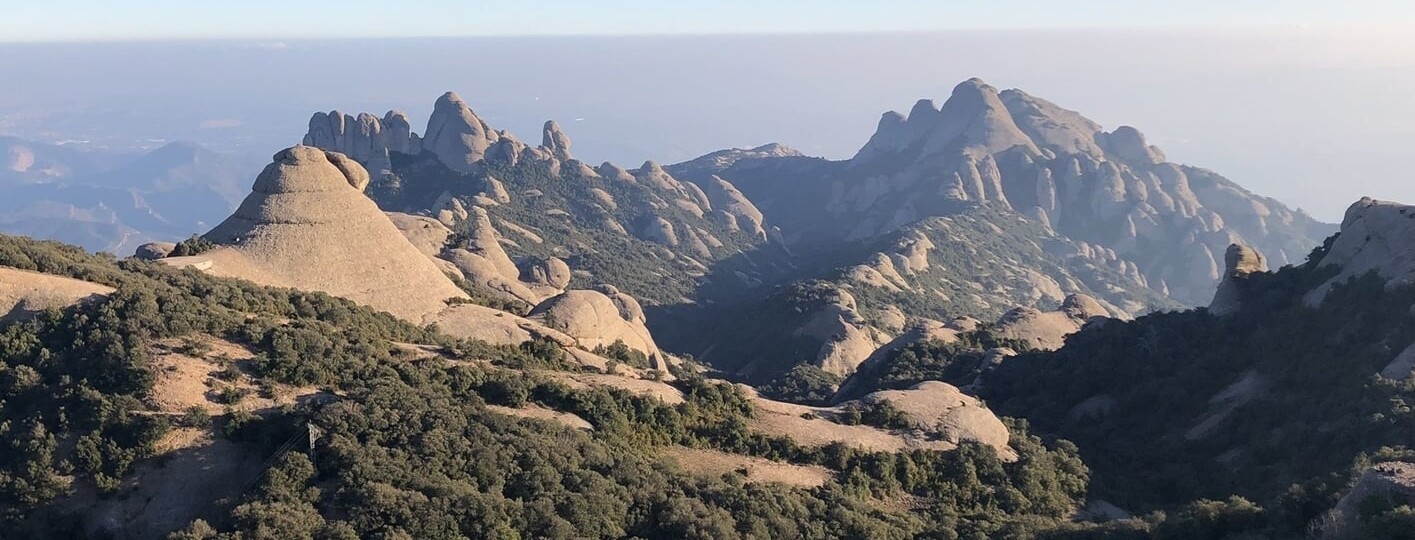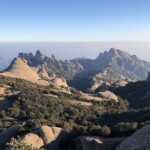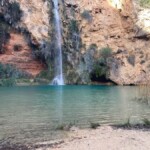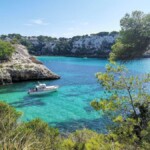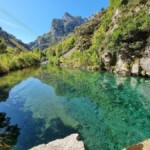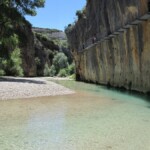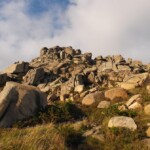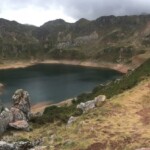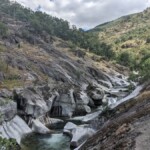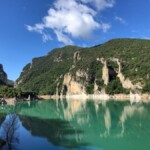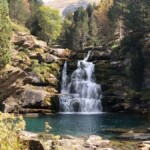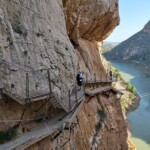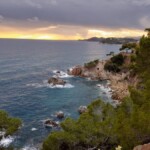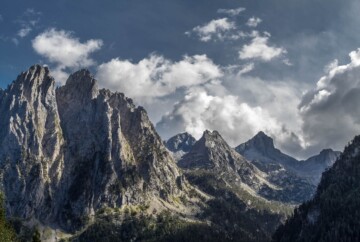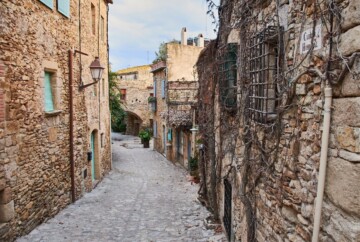There are thousands of miles to hike in Spain, with routes passing through the various natural landscapes of this beautiful country. Some of the trails in Spain run along cliffs, so they’re not suitable if you’re afraid of heights, but others go past coves with crystal clear waters, providing an amazing backdrop for your hiking adventure.
Not only is Spain the second most mountainous country in Europe, but its temperatures are usually moderate all year round, allowing you to go hiking in Spain at almost any time of year. You have many options, but if you want to hike the cream of the crop, I’ve prepared a list of the 15 best hikes in Spain that will leave you breathless.
Don’t worry if you aren’t an experienced hiker because these Spanish trails vary in terms of difficulty and duration. So, if you’re ready to discover the best trails in Spain, let’s get into it!
1. The Cares Trail, Asturias, the best hike in Spain
The Cares Trail, which starts from the Asturian town of Poncebos, is undoubtedly one of the most beautiful hikes in Spain. The route runs within the limits of the Picos de Europa National Park, one of the best national parks in Spain, so you can’t miss it.
Known as La Garganta Divina (Divine Throat), the Cares Trail takes your breath away with its landscape and the depth of its green valley, which contrasts with the crystal clear waters of the Cares River. The path is carved into the rock, so you’ll go through tunnels and gorges, and over a few bridges.
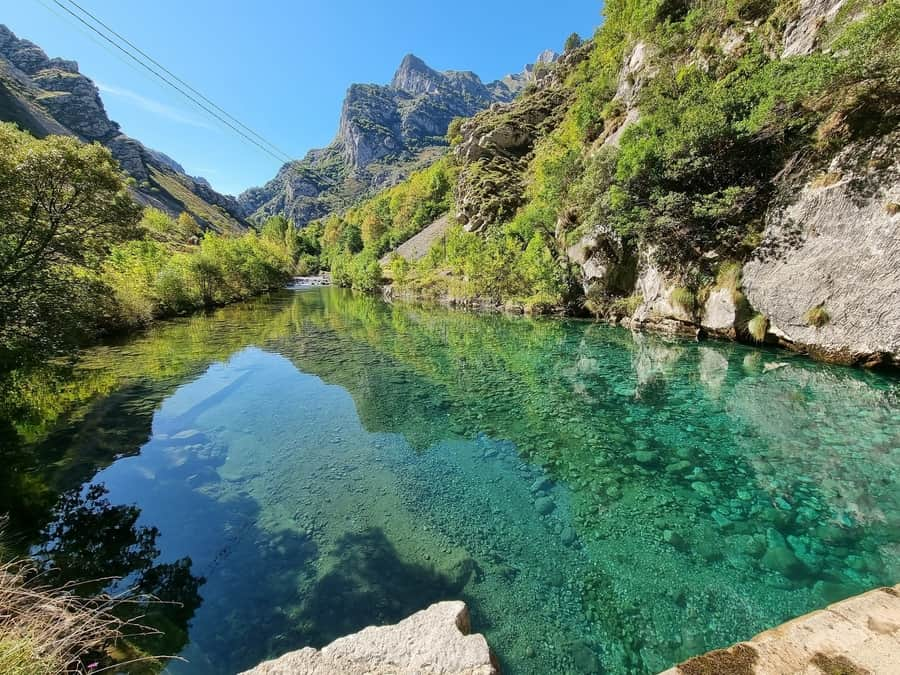
1. The Cares Trail, Asturias, the best hike in Spain
Initially, the route was created to connect the towns of Poncebos in Asturias, and Caín in León, but it ended up being one of the best hiking trails in Spain. If you start from the Asturian part, the beginning is uphill, and then you’ll go through a narrow gorge with a sandstone floor. You’ll have to stay close to the wall of the mountain, although it’s not that difficult (as long as you aren’t afraid of heights, of course).
The gorge narrows as you advance through the Leonese section, and at the end of this Spanish trail, the Caín dam and waterfall await you. While the entire route is worth it, the views along the way are just gorgeous.
Another option, if you’re traveling without a car, is to take this jeep tour (in Spanish), which takes you on an all-terrain vehicle from Cangas de Onís to Caín de Valdeón, followed by a hike on the Cares Trail.
- Duration: 7-8 hours
- Distance: 13.3 miles
- Difficulty: Hard
- When to do it: Year-round, but avoid rainy days
- Type: Out & Back
- Obstacles: Steeper slopes at the beginning, stones, goats
- Elevation: 985 ft
- Recommended accommodation: Hostal Pancebos is located at the beginning of the Cares trail
2. Camí de Cavalls, Menorca, one of the best hiking trails in Spain
The Camí de Cavalls is one of the longest hiking trails in Spain, and one of the prettiest. Its original trail, which was used to defend the coast, is 115 miles long and by going through it, you’ll get to see Menorca’s lovely natural environment.
If you want to go hiking in the Balearic Islands, the Camí de Cavalls is the best option, even if you don’t do the entire route. That said, if you’re physically fit and want to hike it in its entirety, you’ll go around Menorca’s coastline, passing through ravines, valleys, wetlands, farmland, lighthouses, trenches, and coves with pristine turquoise water.
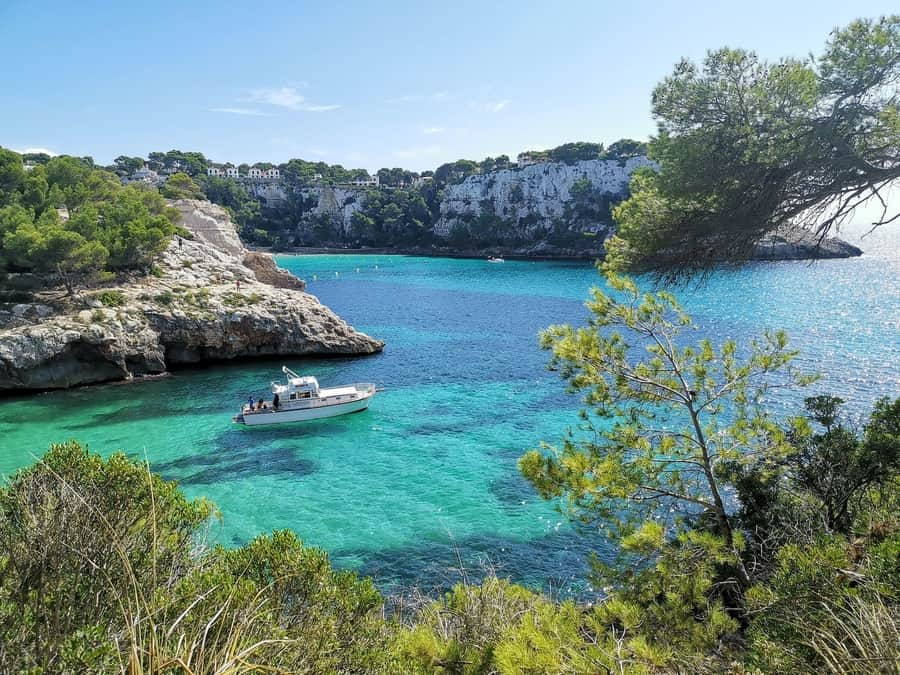
2. Camí de Cavalls, Menorca, one of the best hiking trails in Spain
Moreover, by doing this multi-day hike in Spain, you’ll get to know first-hand the great heritage and natural wealth of this beautiful island, declared a UNESCO Biosphere Reserve.
Whether you do the whole trail or just part of it, remember to wear good shoes since most of the route is rocky. Also, keep in mind that there are parts of the path where you won’t find any lodging options for quite a few miles. As long as you plan accordingly, I can assure you that this hike in Spain is totally worth it!
- Duration: Several days
- Distance: 115 miles
- Difficulty: Hard
- When to do it: Year-round
- Type: Loop
- Obstacles: Duration, rocky trail
- Elevation: 460 ft
- Recommended accommodation: To start the route, I recommend the spectacular Can Alberti 1740 Boutique Hotel
3. Caminito del Rey, Málaga, one of the most famous hikes in Spain
The Caminito del Rey is one of the best hiking trails in Spain due to its uniqueness, and hiking it is one of the top things to do in Spain.
Located in the province of Málaga, this path is a pedestrian walkway built into the canyon’s rock wall. There are some very narrow sections, where the width of the trail barely extends beyond one foot. Moreover, the route is nearly 330 feet above the river, so it’s not recommended for people afraid of heights.
Today, the Caminito del Rey is one of the best hikes in southern Spain. Originally, it was built because the Chorro Hydroelectric Company needed to access the area between the waterfalls for maintenance, material, and surveillance operators to pass through.
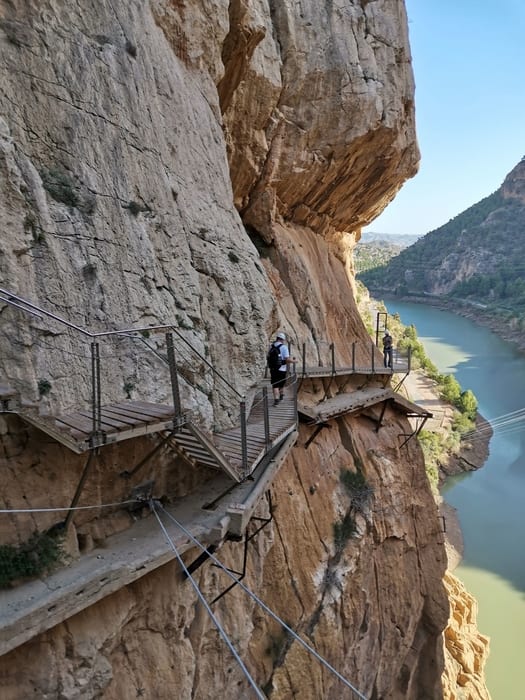
3. Caminito del Rey, Málaga, one of the most famous hikes in Spain
Also, King Alfonso XIII traveled to the area in 1921 to inaugurate the work. He made the trek from the Conde del Guadalhorce dam, so he had no choice but to go through this path. From that moment, people began to call it the Caminito del Rey (The King’s Path), and they still do today.
In 1989, the environment was declared a Natural Area by the Junta de Andalucía. The significance of the Desfiladero de los Gaitanes Natural Park, the footbridges over the hydroelectric dam, and the Paleolithic cave of Ardales makes this one of the best trails in Spain.
General admission, which costs about €10, includes all safety gear and must be booked in advance here. However, if you prefer to do a guided version of this trail, I recommend this half-day excursion, which includes admission to the footbridge, stunning views of the Gaitanes Gorge, and a visit to the King’s Armchair. You’ll also learn more about the route’s history and geological value from a knowledgeable guide.
- Duration: 3-4 hours
- Distance: 4.2 miles
- Difficulty: Moderate
- When to do it: Avoid days with inclement weather because it usually closes
- Type: One-way
- Obstacles: You must wear a helmet
- Elevation: 899 ft
- Recommended accommodation: La Posada del Conde is close to the beginning of this route
4. Congost de Mont-Rebei, Lleida, an amazing hike in Spain
The Congost de Mont-Rebei is one of the most spectacular hiking trails in Spain. Its vertical walls, which are 1,640 feet tall, separate the provinces of Lleida and Huesca.
If you want to do the complete route that starts from La Masieta in Lleida and ends in Montfalcó in Huesca, you’re looking at a total trip of about 10 miles. Most hikers do the shorter version, which turns back after three miles, once you reach the Congost de Seguer suspension bridge, which joins the two provinces.
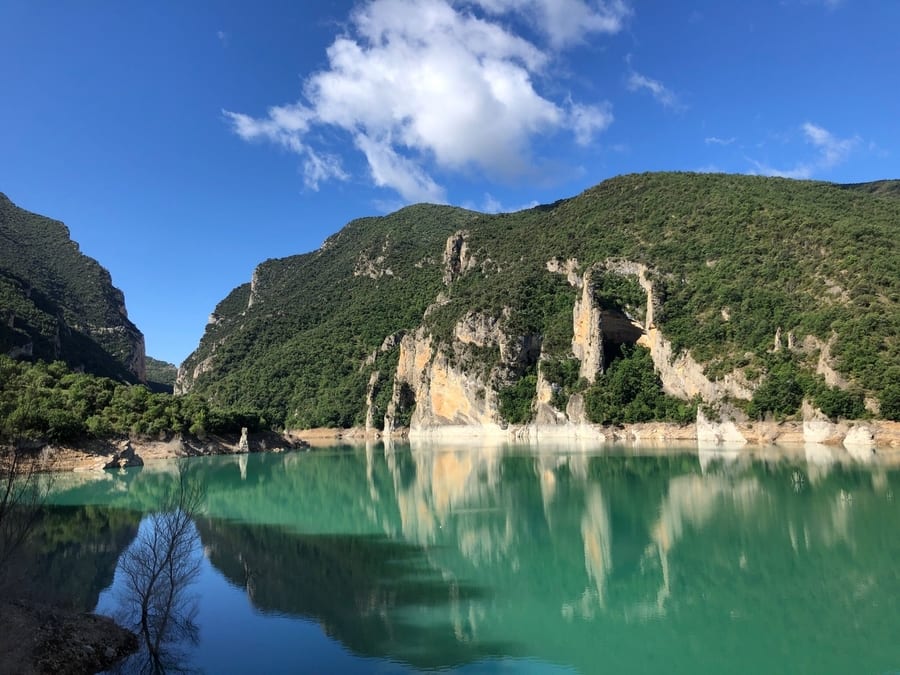
4. Congost de Mont-Rebei, Lleida, an amazing hike in Spain
If you do continue on this Spanish trail, don’t worry because you’ll have several rest stops where you can take a break and admire the stunning surroundings. Just be aware that towards the end of the hike, there is a steeper slope.
Overall, this is one of the best hikes in northern Spain, thanks to the Noguera Ribagorçana River, which crosses the Montsec mountain range. This creates the Mont-Rebei gorge, which is known for its huge vertical walls, so it’s worth seeing.
- Duration: 2 hours (if you turn around the Congost de Seguer suspension bridge)
- Distance: 3.1 miles (if you turn around on the Congost de Seguer suspension bridge)
- Difficulty: Moderate
- When to do it: Year-round
- Type: Out & Back
- Obstacles: Stairs, bridges, rocky terrain
- Elevation: 715 ft
- Recommended accommodation: La Casa de Piedra, in front of the Congost de Mont-Rebei, is the ideal place to start the hike
5. Camino de Santiago, the most impressive hike in Spain
The Camino de Santiago is one of the most famous hiking trails in Spain, not only nationally, but throughout the world.
It’s true that there are many routes that end in Santiago de Compostela, one of the most beautiful cities in Spain. You have the Camino Francés (the French Way), which is the traditional Jacobean route that most international pilgrims do. There is also the Vía de la Plata, which comes out of Andalusia and Extremadura and goes through Galicia, the Portelas do Padornelo, and A Canda.
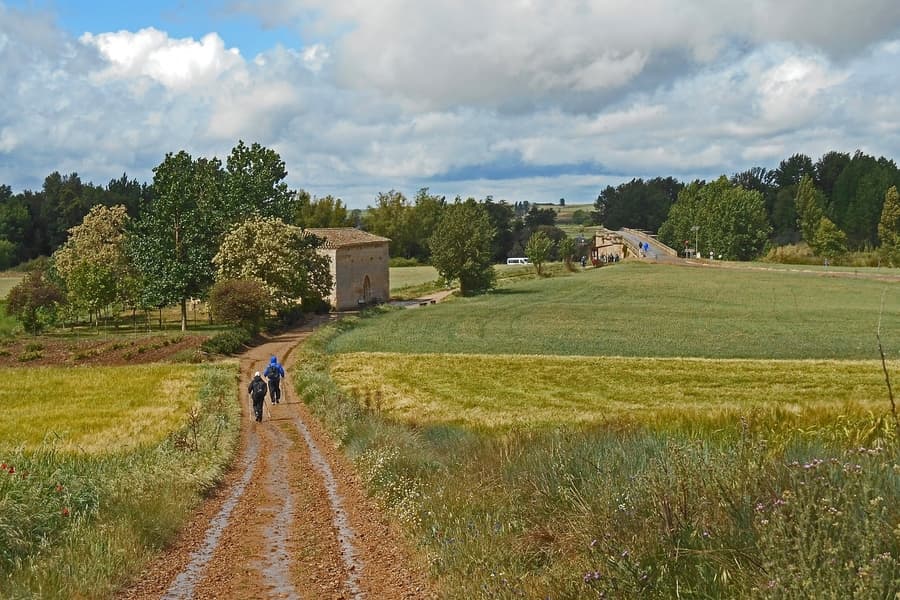
5. Camino de Santiago, the most impressive hike in Spain
Another Spanish trail that leads to Santiago de Compostela is the Camino Primitivo (the Original Way), which was followed by the first pilgrims who arrived from the Kingdom of Asturias. There is also the Camino Portugués (the Portuguese Way), which became popular with the independence of Portugal. Yet another path is the Camino del Norte (the Northern Way), which goes along the Asturian-Galician coast and dates back to the time when the tomb of the apostle Santiago was discovered.
All of these paths are multi-day hikes in Spain, so you should be in good shape if you plan on doing it. Again, this is one of the best trails in Spain, thanks to its atmosphere, its significance, the landscape, and the people you’ll meet along the way. So, I recommend doing at least one of these caminos if you can!
- Duration: Several days
- Distance: Depends on the path you choose
- Difficulty: Hard
- When to do it: It’s better to do it when it’s not as cold
- Type: One-way
- Obstacles: Duration
- Elevation: Depends on the path you choose
- Recommended accommodation: When you arrive, the magnificent Hostal Reis Catolicos, one of the best paradores in Spain, will be waiting for you
6. Barranco de Masca, Tenerife, the best hike in Spain’s Canary Islands
The Barranco de Masca is one of the best hikes in Spain and one of the most spectacular things to do in Tenerife. It’s the second most-visited natural enclave on the island, surpassed only by Mt.Teide.
This hiking route in the Canary Islands begins in the Caserío de Masca, a remote village raised between mountains. The trail is most well-known for its ascent and descent along the Masca ravine, which leads to the beach of the same name.
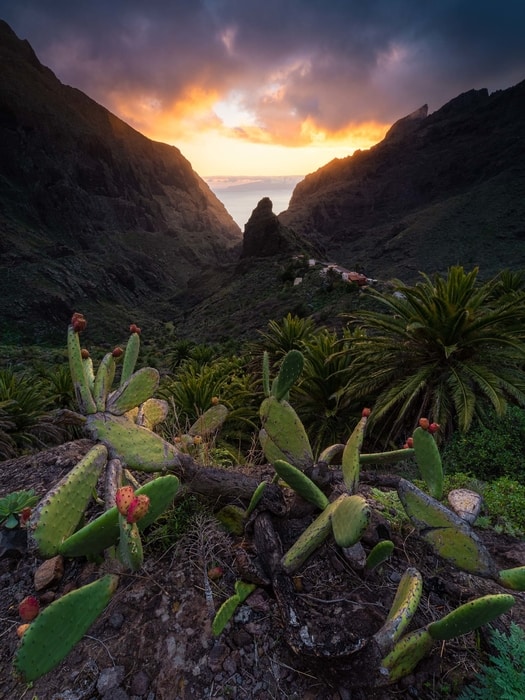
6. Barranco de Masca, Tenerife, the best hike in Spain’s Canary Islands
When we did this hiking route in Tenerife, it was possible to take a boat from Masca Beach to Los Gigantes. Unfortunately, the pier isn’t operational now, so you have to do the return on foot, which makes this one of the most challenging treks in Spain.
If you decide to do this route, I recommend you read our guide to the Barranco de Masca. There, you’ll find more information about the permit, schedules, requirements, and other useful tips about this hike.
Finally, this is one of the best routes for winter hiking in Spain, thanks to the mild climate that Tenerife boasts all year round.
- Duration: 3 hours for the descent, 4 hours for the ascent
- Distance: 3.1 miles one-way (6.2 miles round-trip)
- Difficulty: The descent is moderate, the ascent is hard
- When to do it: Year-round, but avoid weekends if possible
- Type: Out & Back
- Obstacles: Unevenness during ascent, slippery terrain
- Elevation: 2,460 ft
- Recommended accommodation: The Sweet Home Masca is the perfect rural getaway in Tenerife
7. Camí de Ronda, one of the best hikes in Spain along the Costa Brava
One of the best places for hiking in Spain is the Costa Brava, particularly along the Camí de Ronda. If you do the entire route (260 miles), you’ll probably leave from Blanes and end in Portbou, although you can modify the route to shorten it or make it a circular route. In any case, this trail stands out for its charming towns, beaches, and coves that you’ll find along the way.
Moreover, the name of this hiking trail in Spain became popular in the 19th and 20th centuries when it was used by the carabineros and the civil guard to carry out ‘the rounds’ and check for smugglers along the coast.
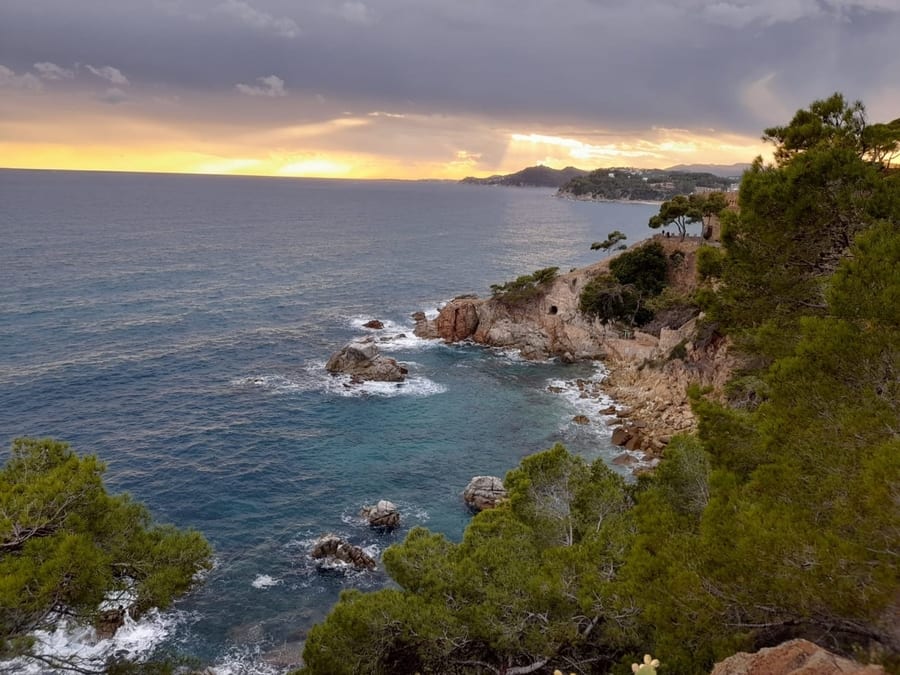
7. Camí de Ronda, one of the best hikes in Spain along the Costa Brava
Something to keep in mind if you want to do this hike is that you must have insurance that covers hiking and similar activities. When we did it, we bought a policy with Heymondo travel insurance, and I highly recommend it.
Whether you do the entire route or just a section, this path will allow you to see the sea and even take a dip along the way. The key thing to remember is good mountain/hiking shoes and trekking poles and, depending on the time of year, a hat to block out the sun. Also, you’ll want to bring a swimsuit so you can quickly jump into the water to cool off!
- Duration: Several days
- Distance: Depends on which route/section you do
- Difficulty: Depends on the section, but generally moderate
- When to do it: Year-round
- Type: One-way
- Obstacles: Slopes, continuous ups and downs
- Elevation: Depends on the section, but the path is general even
- Recommended accommodation: If you do the section that passes through Cadaqués, don’t miss the Hotel Playa Sol
8. Garganta de los Infiernos, Cáceres, another one of the best hikes in Spain
One of the most beautiful trails to go backpacking in Spain is the Garganta de los Infiernos trail. It’s in the Garganta de los Infiernos Nature Reserve in the Valle del Jerte of Cáceres, which is known for its springtime cherry blossoms.
I highly recommend this hiking trail in Spain since it has plenty of shade and natural pools. Besides being good for taking a refreshing swim, the route offers lovely views of the entire valley and gorge.
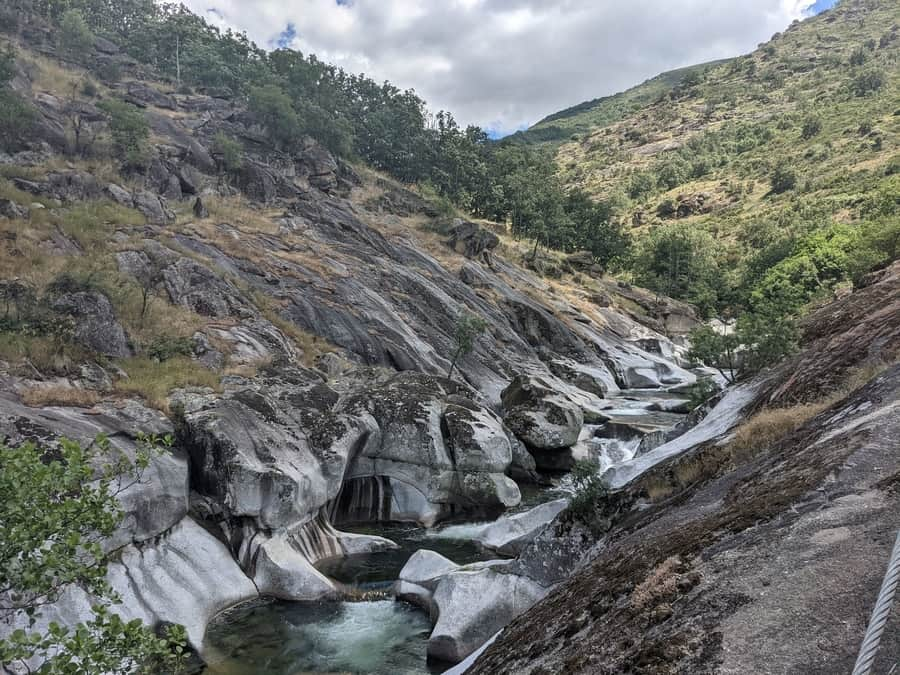
8. Garganta de los Infiernos, Cáceres, another one of the best hikes in Spain
As you can imagine, the surroundings are very pretty, especially the waterfalls. Moreover, part of the route passes through the Carlos V Trail, which is named after Emperor Carlos V, who used the path as a shortcut on his way to Laredo.
Also, the area of Los Pilones, with its giant kettles, and the Chorreo de la Virgen, which has a tremendous waterfall that can be seen from the Chorreo viewpoint (in summer may be dried), are two of the most attractive parts of the trail.
- Duration: 5 hours
- Distance: 9.3 miles
- Difficulty: Moderate
- When to do it: Year-round, although it is prettier in spring thanks to its cherry blossoms, and in the summer, so you can swim. It’s best to avoid winter when ice sheets form along the path.
- Type: Loop
- Obstacles: Narrow trails and stretches of uneven terrain
- Elevation: 2,260 ft
- Recommended accommodation: La Hospedería Valle del Jerte, in the middle of the valley, is a lovely hotel with a pool and solarium
9. Cola de Caballo through the Gradas de Soaso waterfalls in Ordesa, Spain
The Cola de Caballo path is the most famous hike in Spain’s Ordesa Valley, and one of the best-known routes in the Pyrenees.
By doing this trek, you’ll be able to go into the long glacial valley of Ordesa, which was declared a UNESCO World Heritage Site in 1997 and is considered one of the most popular national parks in Spain.
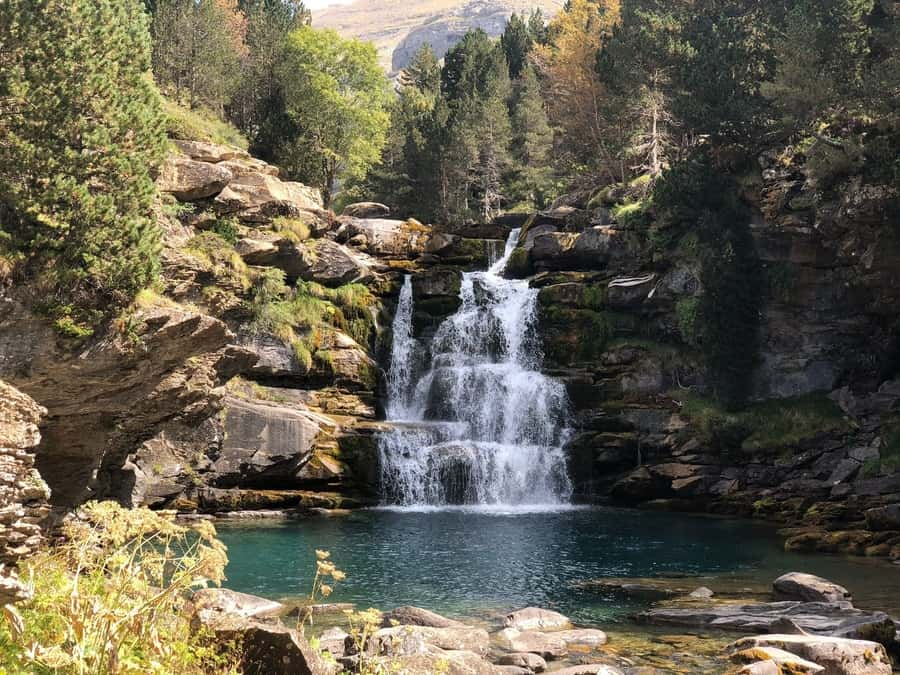
9. Cola de Caballo through the Gradas de Soaso waterfalls in Ordesa, Spain
This hike in Spain’s Pyrenees mountains begins in the Pradera de Ordesa and follows the Arazas River through the valley until it reaches the Soaso waterfalls. During the hike, you’ll be able to admire the walls of the valley, which have been excavated by the erosion of the ancient glacier. You can also enjoy the various waterfalls of the Arazas River, such as the Arripa and Estrecho falls.
As one of the best hikes in Spain, this route is super popular, so there are usually a lot of people here, especially in the summer.
- Duration: 5-6 hours
- Distance: 10.9 miles
- Difficulty: Hard
- When to do it: Spring, summer, or fall
- Type: Out & Back
- Obstacles: The length
- Elevation: 1,640 ft
- Recommended accommodation: The Edelwesiss Hotel, in the town of Torla, is the best place to stay along this route
10. La Pedriza, Madrid, a great place to go hiking in Spain
There are many hiking trails to do in the Sierra de Guadarrama, but if you’re looking for one of the best hikes in Spain that you can do from Madrid, I recommend the La Pedriza-Canto Cochino-Charca Verde route near Manzanares el Real.
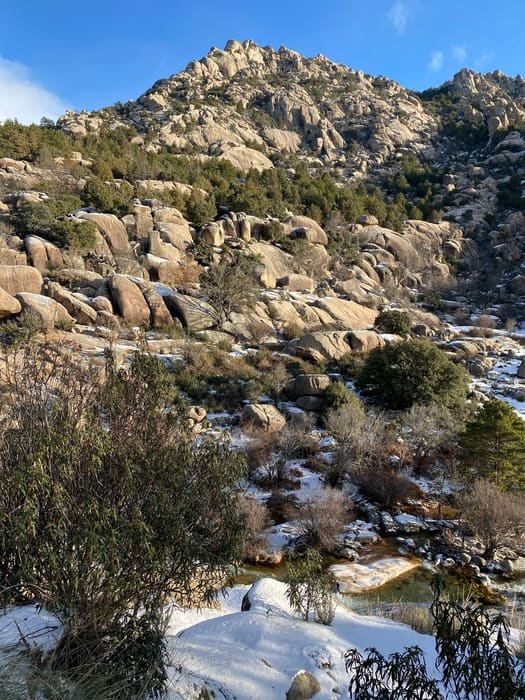
10. La Pedriza, Madrid, a great place to go hiking in Spain
This is a gorgeous path through the mountains of Madrid, and a hike that you can do as a family. The first section, from Pedriza to Canto Cochino, takes about 30-40 minutes, with the Manzanares River on your left. You’ll arrive at a lookout point offering beautiful views of La Pedriza.
Along the path to Charca Verde, you’ll pass two other lookouts with views of the highest peaks of the Sierra de Guadarrama. You’ll love the entire route, so if you’re in central Spain and want to enjoy fresh air and nature, this is an awesome hike in Madrid you should do.
- Duration: 4 hours
- Distance: 7.5 miles
- Difficulty: Moderate
- When to do it: Year-round, although there can be slippery rocks when it rains
- Type: Loop
- Obstacles: Small waterfalls
- Elevation: 1,653.5 ft
- Recommended accommodation: Don’t hesitate to stay at the Hotel Rural La Pedriza Original, which has elegant rooms, a library and TV room, a rustic garden, and a playground.
11. Saliencia Lakes, Asturias, one of the best hikes in Spain in the north
The Saliencia Lakes are in the beautiful Somiedo Natural Park and boast one of the best hikes in northern Spain.
The trail is in southern Asturias, near the border with Castilla y León. Its four glacial lakes (Cueva, Calabazosa, Cerveriz, and Almagrera) are part of the Somiedo Biosphere Reserve and have been declared a Natural Monument.
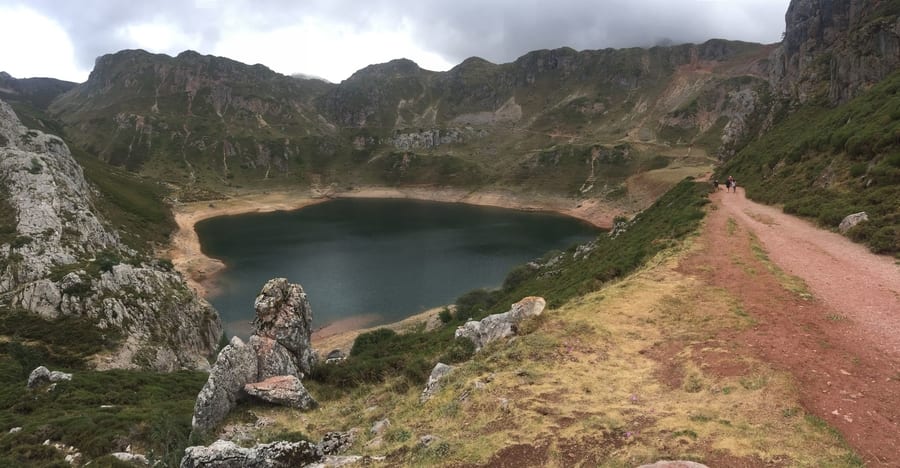
11. Saliencia Lakes, Asturias, one of the best hikes in Spain in the north
The route starts from Alto de la Farrapona in Somiedo, and while you should be in good shape, you don’t need to be an experienced hiker to do it.
The foliage in the area takes on a lovely color from September to December, which is why I think it’s one of the best Spanish hikes to do in autumn. I suggest staying here for at least one day so you can see this impressive park, including its brown bears, chamois, and other native species.
- Duration: 6-8 hours
- Distance: 8.7 miles
- Difficulty: Moderate
- When to do it: Spring, summer, or fall
- Type: Loop
- Obstacles: Long path
- Elevation: 1,312 ft
- Recommended accommodation: The Apartamentos Lagos de Saliencia are right in Saliencia, and they’re very nice
12. Monte Pindo, Galicia, among the most famous hikes in Spain
The climb to Mount Pindo, also known as the Celtic Olympus, is one of the best places to hike in Spain during the summer.
This route starts from the San Clemente do Pindo church, in front of San Pedro Beach. Along the trail, and as you go up, you’ll be able to enjoy spectacular views of the Costa da Morte. The vantage point is even better at the peak of A Moa, which is nearly 1,970 feet high.
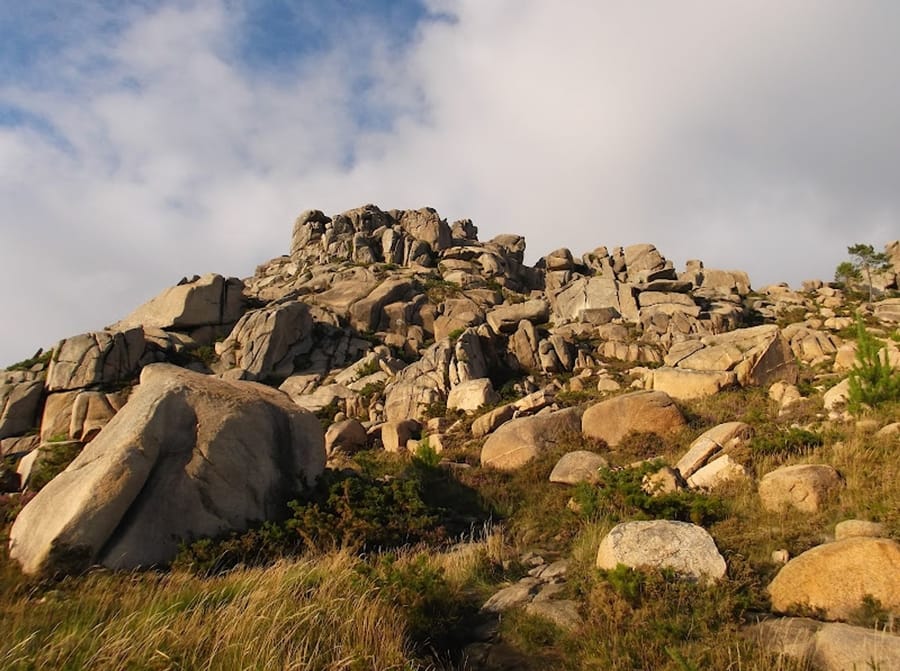
12. Monte Pindo, Galicia, among the most famous hikes in Spain
As you do this Spanish hike, you’ll go between rocks, granite cliffs, pine trees, and ferns, and you’ll pass through the remnants of the medieval castle of San Xurxo, which once defended the coast against pirates. Also, don’t forget to look at O Guerreiro, a famous rock formation that looks like a giant human.
Finally, you can also do this hiking trail in a circular manner, and with less unevenness, if you start from O Fieiro.
- Duration: 4 hours
- Distance: 6.2 miles
- Difficulty: Moderate
- When to do it: Year-round, although it’s best to avoid rainy days
- Type: Loop
- Obstacles: Formations can make it difficult to navigate the terrain
- Elevation: 2,058 ft
- Recommended accommodation: Stay in O Pindo, in the Hospedium Morada da Moa
13. Ruta del Agua Buñol, Valencia, the best hike in Spain to do in spring
The Hoya de Buñol water route is one of the best hikes in Spain and one of the natural treasures of Valencia. Plus, it’s only 25 miles from the capital city.
The trail starts at the Parque de San Luis, in Buñol, and continues along the Paseo del Parque Fluvial, next to the Buñol riverbed. Along the route, you’ll pass by the Molino Galán, next to a large chimney that dates back to the town’s significant paper industry. Today, it’s a multi-purpose cultural center.
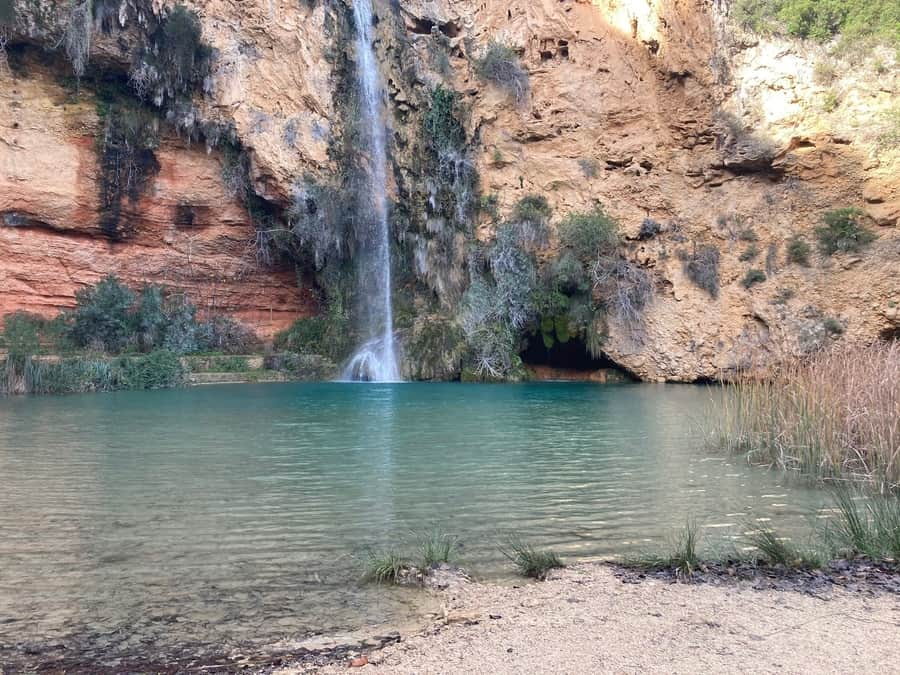
13. Ruta del Agua Buñol, Valencia, the best hike in Spain to do in spring
This circular route will allow you to see the Cueva del Turche, and if you visit after heavy rainfall, you can see a waterfall. You’ll also get beautiful views at the Mirador de la Cueva del Turche, and you can take a dip in the Charco Mañán, which you’ll be grateful for if you do this hike on a hot day.
This trail also passes through the Cueva de las Palomas, which is known for its beautiful waterfall. While this route is quite easy, you should pay careful attention to the trail markings. I recommend going after the coldest weather of winter has passed since it’s one of the prettiest trails in Spain during springtime.
- Duration: 3 hours
- Distance: 5.9 miles
- Difficulty: Moderate
- When to do it: It’s prettiest in the spring
- Type: Loop
- Obstacles: You’ll pass through some rocks
- Elevation: 860 ft
- Recommended accommodation: The Molino Galán in Alborache is a very nice place with a garden, outdoor pool, and barbecue area
14. Pasarelas del Vero, Huesca, a little-known hike in Spain you should do
The Pasarelas del Vero trail begins in the Plaza Rafael Ayerbe de Alquézar, one of the most beautiful small towns in Spain, so it’s the perfect option if you’re there for tourism.
Keep in mind that, before you do this hike in Spain, you must get a permit through this website. It costs about €4 for hikers over 12 years old and will specify the assigned time when you can enter the trail. With the purchase of your permit, you’ll also get a helmet and insurance coverage.
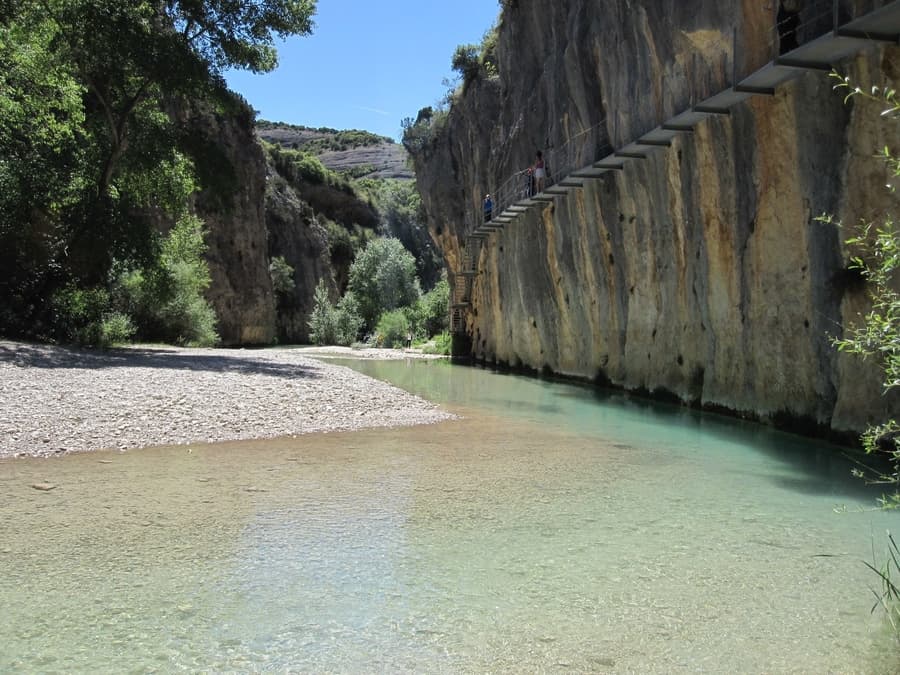
14. Pasarelas del Vero, Huesca, a little-known hike in Spain you should do
At the start of this hiking trail in Spain, you’ll descend from Alquézar to the Vero River through the Barranco de la Fuente. It’s boxed in between limestone walls, with the Collegiate Church of Alquézar at the top, near the right, and the Peña Castibián to the left.
Once you reach the riverbed, visit the Picamartillo Cave if you can. Then, continue through the suspended walkways to see the infrastructure of the old Hydroelectric powerplant. Keep ascending and go through the last section to the Mirador del Vero, where you can enjoy the spectacular views.
To return to Alquézar, you’ll pass through orchards as well as almond and olive trees, so it’s one of the best trails in Spain to hike through in the fall.
- Duration: 1.5 hours
- Distance: 1.9 miles
- Difficulty: Easy
- When to do it: Year-round, but fall is best. Try to avoid doing it on rainy days or just after, since the ground will be more slippery
- Type: Loop
- Obstacles: Irregular and narrow path areas
- Elevation: 590 ft
- Recommended accommodation: Stay at the Hotel Villa de Alquézar in Alquézar, one of the best-preserved medieval towns in Spain.
15. Sant Jeroni Summit Loop, Barcelona, another famous hike in Spain you can’t miss
Another town with some amazing hikes in Spain is Monistrol de Montserrat in Barcelona. Here, you can find the start of the Sant Jeroni Summit Loop, which takes you through the forest before becoming stone peaks as you ascend.
The trail starts at the Montserrat monastery, which you can access by cable car, from the Montserrat-Aéreo train station of the FFCC de la Generalitat. You can also get there via the Monistrol railway.
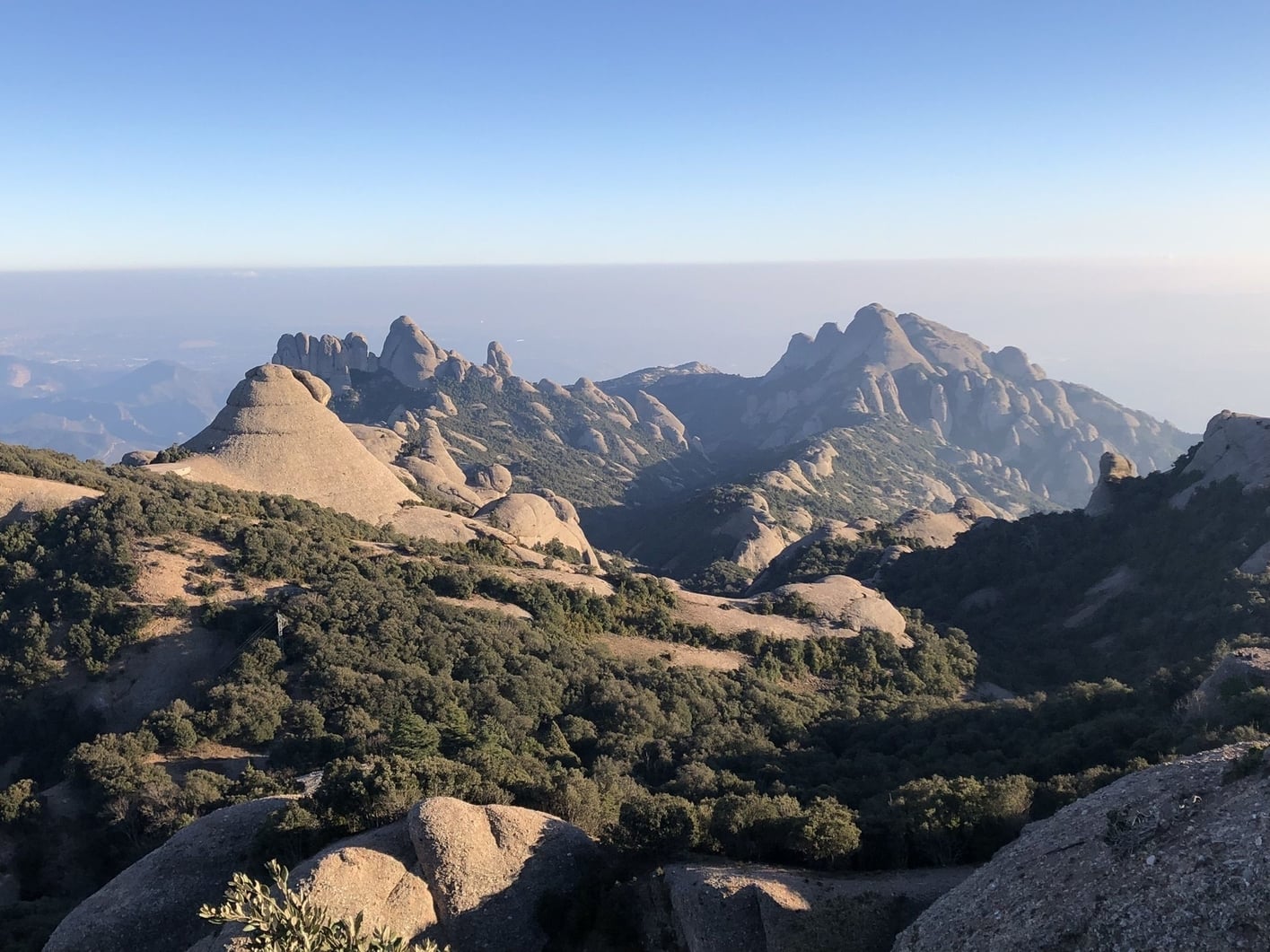
15. Sant Jeroni Summit Loop, Barcelona, another famous hike in Spain you can’t miss
From there, you can take the Sant Joan funicular to the top or walk up. I recommend checking out the exhibit at the Parque Natural de la Montaña, in the upper station’s building. Afterward, continue walking along one of the best hiking trails in Spain to the summit of Sant Jeroni. It’s more or less flat, except for the end, and from there, you can see the towns that surround the massif.
- Duration: 2-4 hours
- Distance: 4.5 miles (5.8 if done in full)
- Difficulty: Moderate
- When to do it: Year-round
- Type: Loop
- Obstacles: Stairs at the end
- Elevation: 1,978 ft
- Recommended accommodation: Stay at the Hotel Abat Cisneros Montserrat, next to the Montserrat Monastery, which dates back to 1563
To end this guide, I’m sharing a map with the most important hikes in Spain, so you can clearly see where each trail is located.
If you have any questions or you’d like to share your experience hiking in Spain, leave me a comment below. I’ll be happy to answer you. Until then, have a nice hike!
